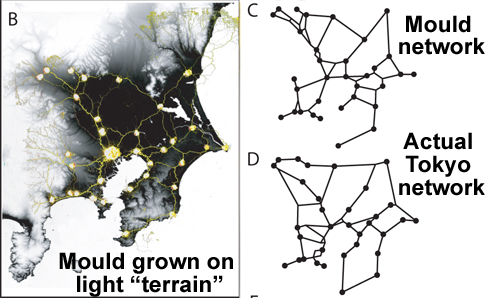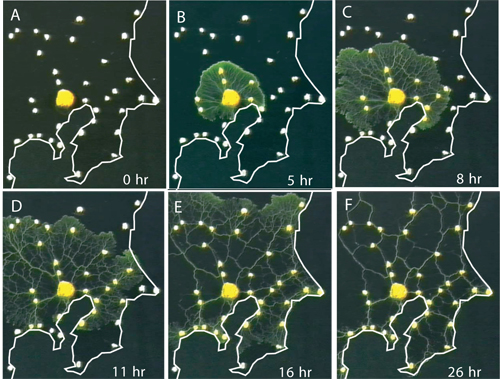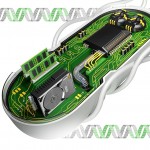 In a stunning display of self-organisation, a slime mould has managed to conversantly design the tokyo rail network – to a fairly accurate degree too. This feat was accomplished through the design of a clever tokyo model for the slime mould to grow on. Mountains (which are bad for trains) were simulated by lights (which the mould dislikes), similarly food was used to represent urban centres. The mould quickly optimised the ideal distribution network between the nodes of food, matching the Tokyo rail model.
In a stunning display of self-organisation, a slime mould has managed to conversantly design the tokyo rail network – to a fairly accurate degree too. This feat was accomplished through the design of a clever tokyo model for the slime mould to grow on. Mountains (which are bad for trains) were simulated by lights (which the mould dislikes), similarly food was used to represent urban centres. The mould quickly optimised the ideal distribution network between the nodes of food, matching the Tokyo rail model.

The scientists behind this work suggest that this biological system of design might be used as an alternative to traditional methods of design, essentially using biological systems as replacements for other types of optimisation (such as computer algorithms). Whether such models will ever replace more traditional forms of design is questionable, but perhaps the two can work in synchrony in the future? Another potential is that slime mould (or other biological optimisation systems) might provide a quick way to do complex design work for non-critical applications.
The original article can be found here. Its abstract is as follows:















Slime mould is the greatest